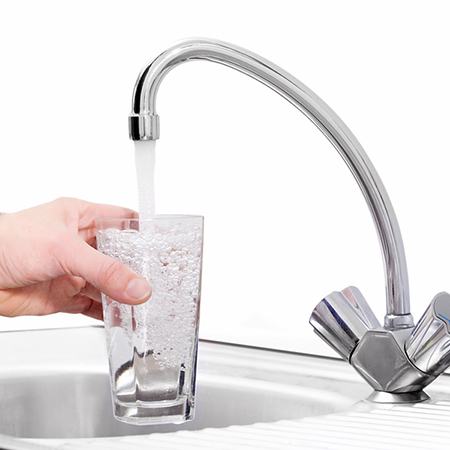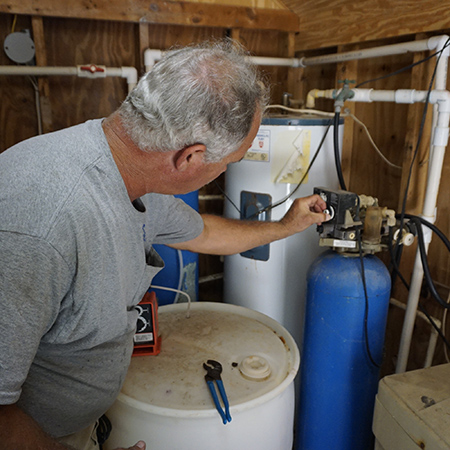All About the Water Softener

Unsightly streaks of white residue on your shower tiles and calcium buildup around your faucets are clear signs that you have hard water. A water softening system will solve these problems and so much more! A water softener can extend the life of your pipes, dishwasher and washing machine by preventing mineral buildup.
What makes water hard?
Hard water is caused by a high concentration of minerals in your water like calcium and magnesium. Water picks up these minerals as it passes through the ground or waterways dissolving rocks, like limestone and metals, in its path.
While wells are known for having hard water, city water is often hard too. Even though city water is regulated—unlike wells—municipalities are not required to treat it for hardness since it is safe to drink hard water.
How does water softener work?
Water softening was pioneered in the 1940s. Water softening systems remove hard minerals from water making it gentler on your skin, hair, and laundry along with your home’s pipes and water-based appliances. It works through a process of ion exchange.
The minerals that cause hardness—calcium (Ca+2), iron (Fe+3), and magnesium (Mg+2)—are all positively charged cations. Sodium (Na+) is also positively charged but it has a much weaker charge. This is what allows for an exchange of ions.
Water softener tanks are filled with a negatively charged material such as zeolite crystals or resin beads in a sodium solution. Strongly charged minerals like magnesium and calcium in water are attracted to this negatively charged material as they pass through the tank. They swap places with the sodium ions. This traps them inside the water softener tank while the water flows out of it.
The water that flows out of your tank will have more sodium than it did before, but it won’t be salty. The ion exchange process only requires a little sodium.
Why do you need to add water softening salt?
 The water softening salt that you add to the system is what helps it keep attracting hard minerals. The process that occurs inside the tank is called regeneration. It occurs every evening usually in the middle of the night.
The water softening salt that you add to the system is what helps it keep attracting hard minerals. The process that occurs inside the tank is called regeneration. It occurs every evening usually in the middle of the night.
When you add the water softening salt to the tank, it creates a brine or salt solution. This solution is held in a secondary storage tank. During the regeneration process, the brine solution flows into the main softener tank bathing the negatively charged material. This causes the process that happened before to reverse. The sodium ions swap places with the hard minerals. The water containing this concentration of minerals is then flushed out of the tank leaving the tank ready to catch more hard minerals the next day.
Is a water softener a smart investment?
Many people view a water softener as a luxury but it serves a vital role in protecting your plumbing system and water-based appliances. Hard water causes mineral buildup in pipes that can cause serious plumbing issues. This buildup can also significantly shorten the life of your dishwater and laundry machine.
Hard water is as tough on your skin, hair, and clothes as it is on your pipes. It prevents soap from lathering properly. As a result, when you bathe or wash your clothes gunky residue from the soap is left behind making clothes feel stiff and your skin and hair dry.
A water softener will solve all of these problems. It is a smart investment for anyone with hard water. If you want to learn more about your water softeners, contact the experts at Tri-Florida Water Treatment, Inc.
